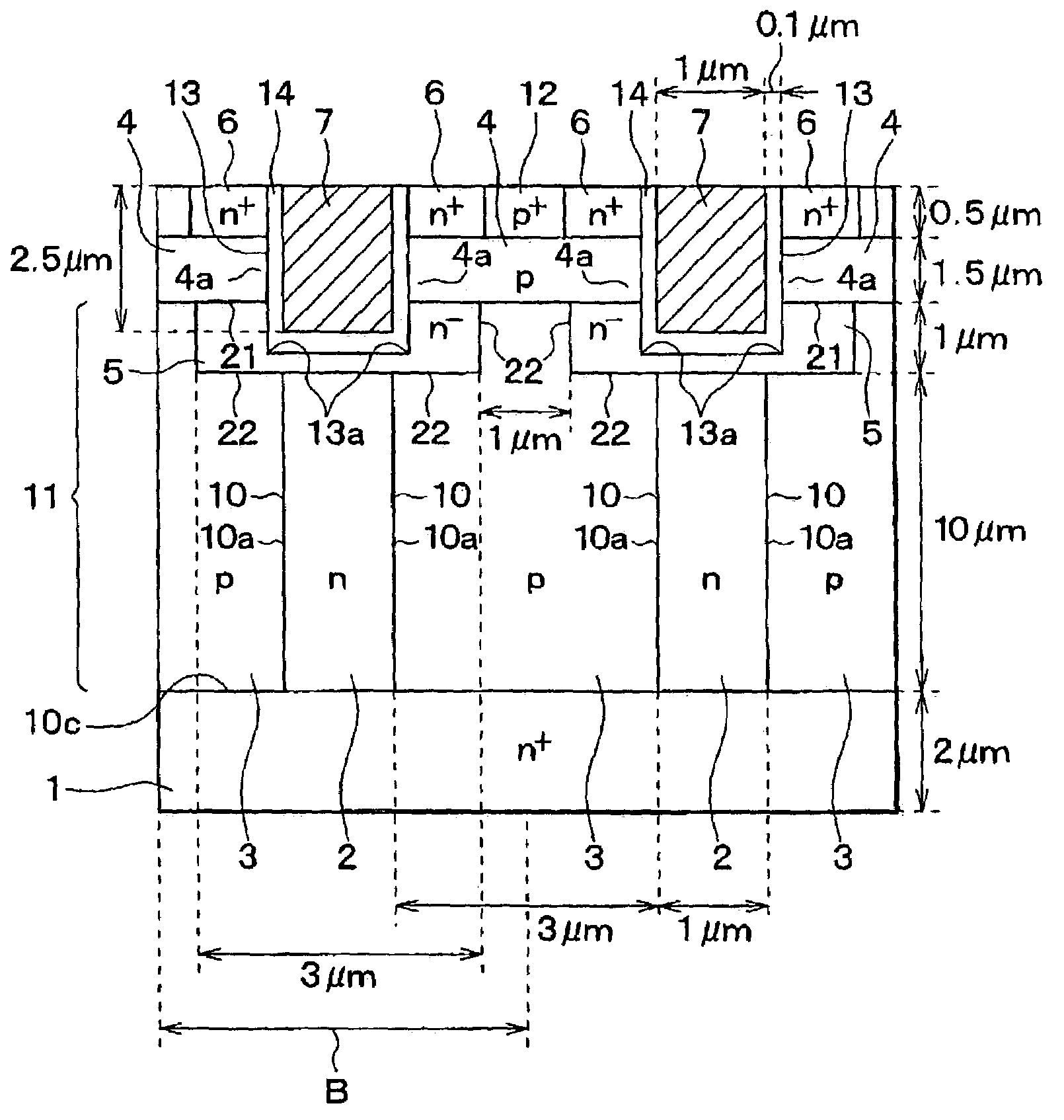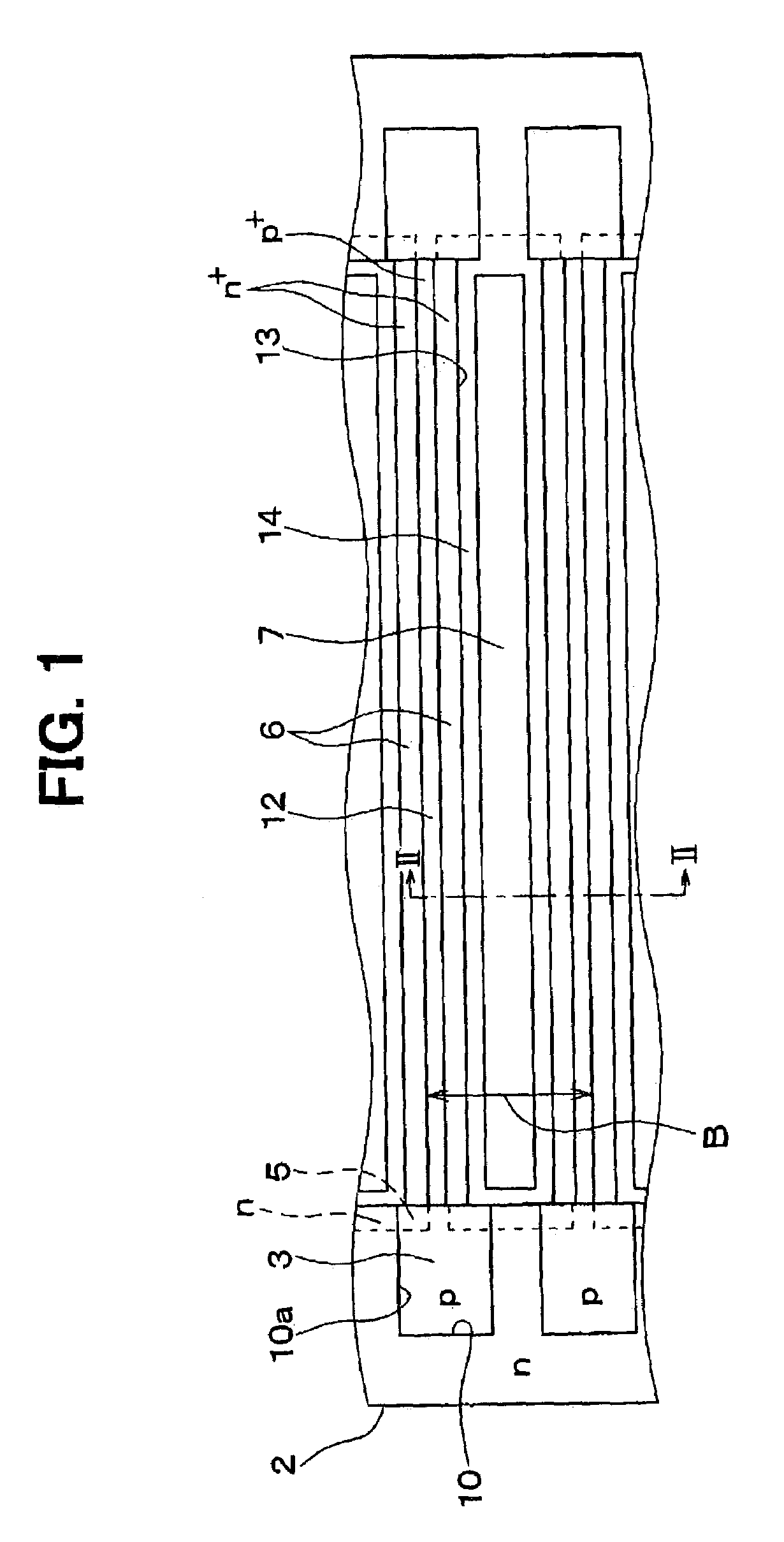Stabilization of dopant concentration in semiconductor device having epitaxially-filled trench
a technology of epitaxial filling and stabilizing dopant concentration, which is applied in the direction of semiconductor devices, basic electric elements, electrical equipment, etc., can solve the problems of fluctuation and deviation of dopant concentration in the substra
- Summary
- Abstract
- Description
- Claims
- Application Information
AI Technical Summary
Benefits of technology
Problems solved by technology
Method used
Image
Examples
first embodiment
[0020
[0021]FIG. 1 is a plan view of a power MOSFET having a super junction structure according to a first embodiment of the present invention. FIG. 2 is a cross-sectional view of the power MOSFET taken along the line II—II in FIG. 1. In this power MOSFET, a structure within a range having a width B is a single unit structure, which is repeated a plurality of times to form this power MOSFET. This power MOSFET includes an n+-type substrate 1, n-type drift regions 2, p-type silicon regions 3 as first semiconductor regions 3, p-type base regions 4, upper n-type silicon regions 5 as second semiconductor regions 5, n+-type source regions 6, and gate electrodes 7.
[0022]The n+-type substrate 1 forms an n+-type drain region 1, and the thickness of the n+-type substrate 1 is, for example, 2 μm in a vertical direction of the n+-type substrate 1. The substrate 1 has a dopant concentration of 1×1019 to 1×1023 cm−3. The n-type drift regions 2 are located on the n+-type substrate 1 and have, for e...
second embodiment
[0069
[0070]FIG. 5 is a partial schematic plan view of a power MOSFET having a super junction structure according to a second embodiment. FIG. 6 is a schematic cross-sectional view of the device in FIG. 5 taken along the line VI—VI. The cross-sectional structure of the device of FIG. 5 taken along the line II—II in FIG. 5 is the same as that shown in FIG. 2, and the portion that has the cross-sectional structure along the line II—II in FIG. 5 is a unit element. The cross-sectional view, which is shown in FIG. 6, of the device of FIG. 5 taken along the line VI—VI in FIG. 5 shows an end of the power MOSFET of FIG. 5.
[0071]The power MOSFET according to this embodiment has the structure in which a low dopant concentration region 41 is added to the power MOSFET shown in FIG. 1 around the super junction such that the low dopant concentration region 41 has a dopant concentration lower than the regions that make up the super junction. There are no differences in other aspects. Therefore, the...
PUM
 Login to View More
Login to View More Abstract
Description
Claims
Application Information
 Login to View More
Login to View More - R&D Engineer
- R&D Manager
- IP Professional
- Industry Leading Data Capabilities
- Powerful AI technology
- Patent DNA Extraction
Browse by: Latest US Patents, China's latest patents, Technical Efficacy Thesaurus, Application Domain, Technology Topic, Popular Technical Reports.
© 2024 PatSnap. All rights reserved.Legal|Privacy policy|Modern Slavery Act Transparency Statement|Sitemap|About US| Contact US: help@patsnap.com










